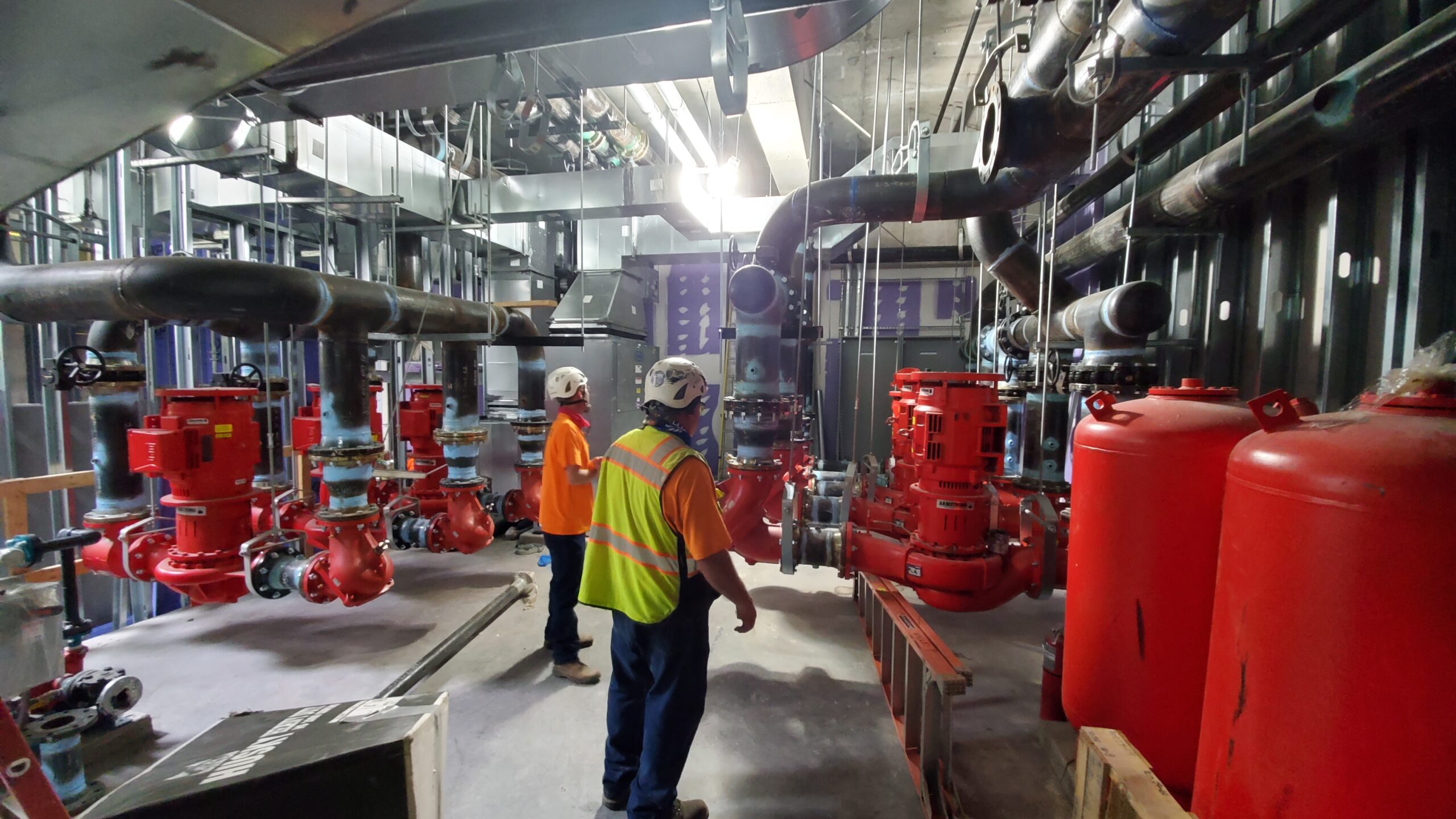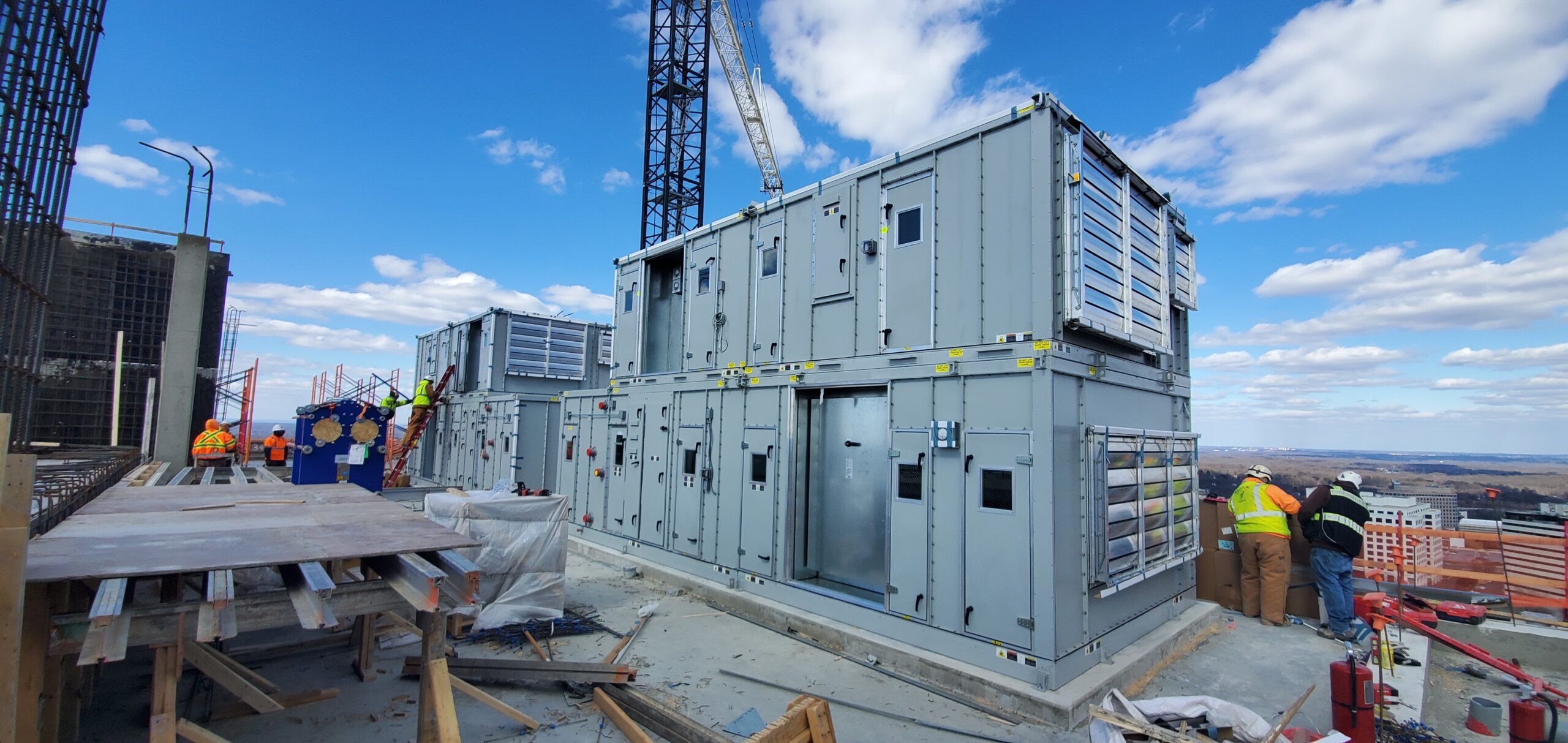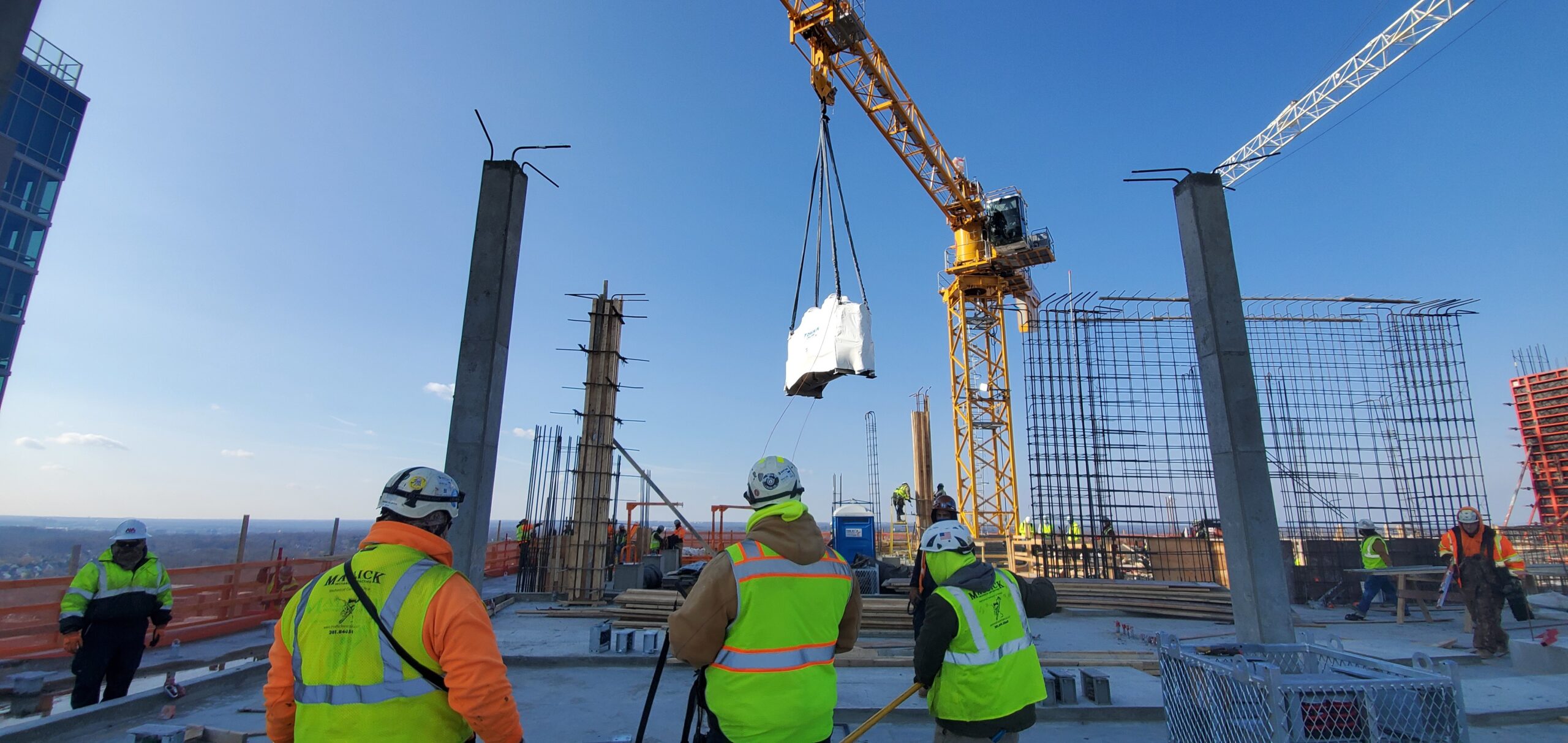
Tyson’s Tower
Tyson's Corner, Virginia
Contract Value: $15,090,000
GC: Clark Construction & Foulger-Pratt
Owner: USAA/ Foulger-Pratt
Engineer: GHT Engineering
Project Description
Tyson’s Central is a 635,000 sq-ft. building located in Tyson’s Corner, Virginia. The 23-story building will allocate 13 stories of office space while also containing 19,000 sq-ft. of retail space. It also has three stories of below-grade parking and six floors of above-grade parking.
Mallick Mechanical Contractors completed the core and shell of the building, instituting three DaikIn chillers, three heat exchangers, three solid separators, two DOAS modular air handlers, two 2-cell cooling towers and 15 hydronic pumps.
Six DOAS boxes were equipped on each floor – between levels 8 and 21 – to heat and cool the future tenant spaces. Additionally, twelve water source heat pumps were installed throughout the building, which were responsible for conditioning multiple lobbies, the building’s fitness center, all below-grade-retail/staff space and the elevator machine rooms.
In total, 1.2 million tons of cooling was instituted by Mallick Mechanical.
STRATEGIES
In its first new construction project together, Mallick Mechanical established a strong relationship with Clark Construction, rooted in trust and collaboration.
In the early stages of the project, both parties came to an understanding on how pivotal the completion of the penthouse mechanical room was for the health of the project. Mallick Mechanical was presented with a 14-week deadline, which included the time allotted to set all mechanical equipment, install all necessary piping and prepare everything for startup and completion.
Crucial team members from Clark Construction and Mallick Mechanical, including foremen, superintendents, VDC coordinators and fabrication leadership, met weekly to develop a plan of action to meet this critical deadline.
This collaboration led to a labor plan on a spool-by-spool basis, which also contained manpower estimates, an efficient delivery strategy and a top-down installation procedure for equipment.
Mallick Mechanical’s VDC department and fabrication team separated the penthouse into eight sections with about 750 total spools. After the spools were fabricated and delivered, they were relocated to the roof and organized in the penthouse. With limitations to crane access and roof space on the penthouse along with a narrow time frame to complete this portion of the project, crews were separated accordingly and given different responsibilities in an assembly line-like fashion to effectively handle and install all 750 spools.
This system – organized and executed by leadership – generated the installation of approximately 13-14 spools per day, including pipe sizes ranging from 4” through 12”.
Within their productive conversations, Clark Construction and Mallick Mechanical also discussed the feasibility of an inline, free hanging method of installation for the 15 hydronic pumps, ranging from 750-1700 lbs. each.
For approximately three months – 1-2 times a week – Mallick Mechanical, Clark Construction, the pump manufacturer and GHT were engaged in organized discussion to ensure everyone involved understood the situation and how this methodology of installation would lead to a more effective, long-lasting product.
Although the manufacturer recommendation was to have the pumps inline and free hanging, the combined weight and whether the 23-story building’s roof could support them became a concern. The conversations between Clark, GHT and Mallick Mechanical garnered trust from all trade partners, allowing the Mallick team to hang the pumps – the agreed upon best install practice.
CHALLENGES
Due to the project’s plans, a 6-ft. deep mud mat was required in of which Mallick Mechanical was to install all underground drainage piping. Coordination played a major role as the Mallick Mechanical team was required to move from pour to pour instead of installing the underground sanitary and storm piping in linear succession.
The building had to remain as watertight as possible throughout construction, requiring our installers to stay in line with the concrete contractor and maintain daily communication. Our trimble coordinators played a significant role in this portion of the project by creating all the anchor points to preinstall our hangers before the structural team installed the required rebar.
With over 47,000 cubic yards of concrete that went into Tyson’s Central, Mallick Mechanical’s onsite leadership established proactive plans with other trade partners that allowed each one to meet the required project deadlines.
The Mallick Mechanical team’s tightest deadline arrived right before the building was scheduled to top out. Over the course of two days, all mechanical equipment had to be rigged and placed, including the two, 5-piece modular air handlers which were to be assembled on the roof. This process was detail-oriented with the manufacturer and Mallick Mechanical supervision to certify that both air handlers would function as designed when startup would occur a few weeks later and meet all expectations for ownership and Clark Construction.
Mallick Mechanical’s VDC team provided precise details and measurements to where the final coordinates of the mechanical equipment would be located. Based on the given information, the onsite foreman carried out this strategy, leading to no additional time needing to be allocated to this phase of the project.
Tyson Central’s roof scheduled was to be poured right after the equipment rigging date, heightening Mallick Mechanical efforts and leading to increased weekly hours to complete this vital project milestone.
The five months’ worth of work was minimized to three-month time span by Mallick Mechanical’s dedicated team and because of Clark Construction’s trust and accommodation.
During this three-month timeline and throughout the heart of summer, Mallick Mechanical provided temporary cooling to maintain the temperature for three separate lobby areas, with humidity-sensitive finishes within Tyson’s Central Building A.
The collection of equipment on and in the penthouse led to a limitation of space that was recognized by Mallick Mechanical project management during the early stages of the project and was extremely apparent when examining the cooling towers.
The design only allowed 5-ft. of clearance on three of the four sides of the cooling towers. In order to combat this, Mallick Mechanical’s VDC and fabrication team developed a plan that would place the cooling tower piping on a 17-ft. tall pipe stand – of which four pipes were stacked on top of one another to utilize as much available space as possible. This strategy not only made it easy on our installation team by fabricating all crucial components but would make the system accessible should it need any future maintenance from ownership.
As a team with Clark Construction and other trade partners, Mallick Mechanical Contractors successfully coordinated and completed all of Tyson’s Central’s project milestones on, or before, the agreed upon deadlines.
TESTIMONIAL
“It was an absolute pleasure working with Mallick Mechanical especially [Project Manager] Bobby and [Foreman] Gerrit. Bobby and Gerrit were exceptional team players throughout the course of the project. They are dedicated, responsive, and eager to go extra miles to support the client, GC and other trades.”
– Amir Arabzadeh, Senior MEP Manager, Clark Construction








